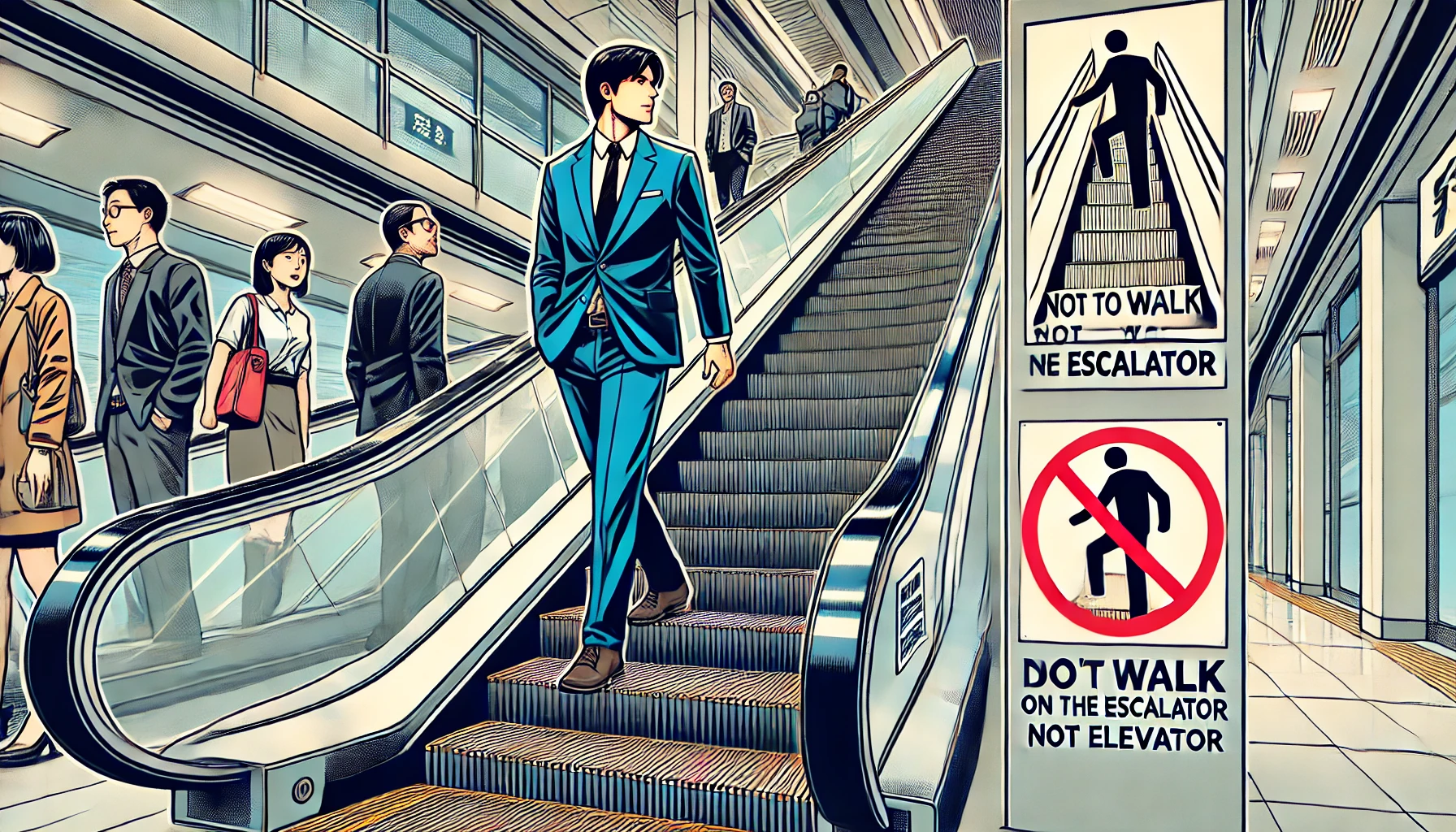
In a country known for order, punctual trains, and courteous queues, one public behavior continues to puzzle even locals—people walking on escalators, despite the signs asking them to stop. If you’ve visited any major station in Tokyo or Osaka recently, you’ve likely seen the “Please do not walk on the escalator” signs, often accompanied by cute mascots or multilingual reminders. Yet, the majority of commuters continue striding up the left side without hesitation. So why do rule-abiding Japanese people ignore these signs?
🚶♂️The Origins of the “Walk Left, Stand Right” Habit
For decades, Japan’s escalator etiquette has been regionally split: stand on the left and walk on the right in western Japan (e.g., Osaka), and vice versa in eastern Japan (e.g., Tokyo). This system wasn’t written into law but emerged organically as a form of unwritten social order to keep foot traffic moving during rush hour. Once this behavior became ingrained in commuters, it became self-reinforcing. Anyone blocking the walking lane risks subtle social backlash—or an annoyed sigh from behind.
🛑 Campaigns Against Escalator Walking
In recent years, transport authorities and safety organizations have been increasingly concerned about injuries caused by walking on escalators. Elderly people being knocked over, children getting caught, and even people tripping over suitcase wheels have prompted a wave of public safety campaigns. These campaigns often involve:
- Large visual signs at the base and top of escalators
- In-train and in-station announcements
- Safety mascots like JR East’s “Safety Bear”
- “Stand still” days where staff monitor escalator behavior
Despite all this effort, the behavior hasn’t changed much. Some surveys show that over 70% of people still walk on escalators in metropolitan areas.
🧠 The Psychology Behind Noncompliance
Here’s where it gets interesting. Japan’s social behavior is largely guided by what others are doing. This is a collectivist society where conformity matters. So, when everyone around you is walking on the left side of the escalator—even if a sign says not to—you’re far more likely to follow the crowd than obey the sign. It’s not about defiance; it’s about flow.
Also, for many commuters in a hurry, walking on the escalator feels like a necessity, not a choice. Missing a transfer train by 30 seconds can mean an extra 10 minutes or more during rush hour. In a culture where punctuality is a form of respect, every second matters.
📉 Is Change Even Possible?
Some private railways, like Saitama’s Seibu Line, have experimented with flat-out banning escalator walking, even staffing the areas with attendants. In those locations, compliance improved dramatically—temporarily. But once enforcement disappeared, so did the order.
Experts suggest that lasting change would require a cultural shift and design changes—like narrower escalators, motion-triggered alarms, or even escalators that pause if walked on.
📝 Final Thoughts
In Japan, the rules are usually followed not because of fear of punishment, but because of shared social values. Ironically, the same force that makes Japanese society appear highly orderly—social conformity—is also what keeps people walking on escalators, against the rules. Until enough people stop walking, the rest simply won’t feel comfortable being the first to do so.



















































